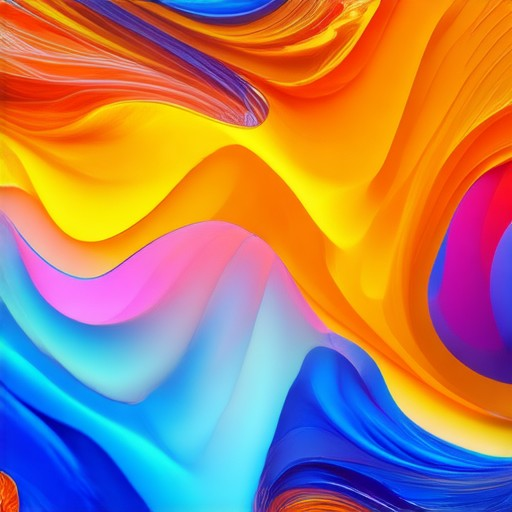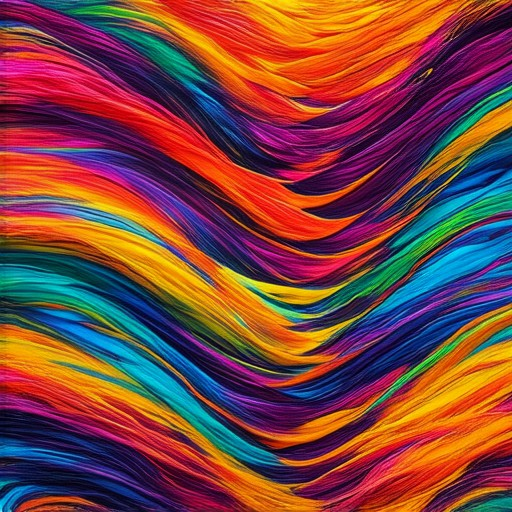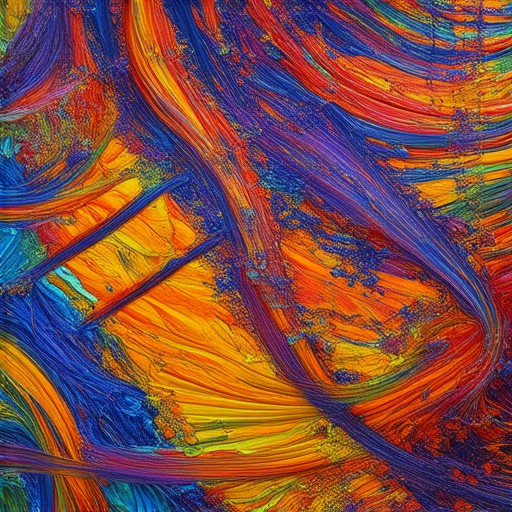Exploring the vast spectrum of artistic expression is a journey that invites curiosity, creativity, and self-discovery. Whether you’re an aspiring artist or someone looking to deepen your understanding, this guide offers a comprehensive overview of the key aspects of artistic expression. From identifying your unique style to mastering techniques across various forms, this article provides practical advice and insightful tips to help you navigate the world of art. By addressing fundamental questions and exploring diverse methods, this guide empowers you to unlock your creative potential and express yourself authentically. Dive in and uncover the secrets to unlocking your artistic expression, ensuring your work resonates deeply with both yourself and your audience.
Key Takeaways
– Unlock Your Creativity: Discover your artistic potential by experimenting with various mediums and exploring diverse styles.
– Find Inspiration Everywhere: Use your surroundings, nature, and culture as sources for your creative ideas.
– Develop Your Skills: Regular practice and technique study are essential for growth in your artistic journey.
– Join Communities for Support: Collaborate with other artists, attend workshops, and seek feedback to refine your work.
– Set Clear Goals: Define both short-term and long-term objectives to stay focused and motivated.
– Broaden Your Horizons: Study different art movements and cultural influences to spark fresh creative ideas.
– Document Your Progress: Keep a portfolio or journal to track your evolution and showcase your growth.
– Express Yourself Authentically: Use artistic expression as a tool for personal growth and social commentary.
– Explore Various Forms of Art: From visual arts to performing arts, find the medium that resonates most with you.
– Use Expression Techniques Effectively: Enhance your communication and connection with others through verbal and non-verbal cues.
– Practice Active Listening and Authenticity: Build trust and stronger relationships by being present and consistent in your interactions.

The Seven Artistic Expressions Explained
The world of art is vast and diverse, encompassing a wide range of creative expressions that have been integral to human culture for centuries. Below is a breakdown of the seven primary artistic expressions, each offering unique ways to explore and express creativity:
- Painting : Painting is one of the most accessible and widely recognized forms of art. It involves the creation of images on a surface, typically canvas, using paints, colors, and brushes. Paintings can depict scenes, emotions, or abstract concepts, serving as a medium for personal and cultural expression.
Related Concept: Color Theory - Sculpture : Sculpture involves three-dimensional objects created from materials like clay, marble, wood, or metal. Artists shape and mold these materials to convey ideas, tell stories, or capture the essence of a subject.
Related Concept: Materials and Texture - Literature : Writing and literature allow authors to express thoughts, feelings, and narratives through words. This form of art encompasses poetry, novels, essays, and dramas, providing a medium for storytelling and intellectual exploration.
Related Concept: Narrative Structure - Architecture : Architecture is the art and science of designing structures and spaces. It involves creating functional and aesthetically pleasing environments, often blending utility with beauty to create iconic buildings and urban landscapes.
Related Concept: Space Design - Theater : Theater is a live performance art form that combines acting, directing, set design, costumes, and music to bring stories and themes to life. It engages audiences emotionally and intellectually, offering a dynamic and interactive experience.
Related Concept: Stagecraft - Film : Cinema, or film, is a visual and auditory art form that tells stories through moving images and sound. Directors, writers, actors, and cinematographers collaborate to create films that captivate audiences and evoke emotions.
Related Concept: Cinematography - Music : Music is an art form that communicates emotion, tells stories, and transcends boundaries. Composers, musicians, and singers create melodies, harmonies, and rhythms that resonate with listeners worldwide.
Related Concept: Musical Genres
Supporting Creative Expression
At Artful Journey, we believe that exploring and mastering these artistic expressions is essential for personal growth and creative development. Our platform offers resources, tutorials, and articles to help artists of all levels discover their unique style and expand their skill set. From learning the basics of color theory in painting to understanding spatial dynamics in architecture, we provide the tools and knowledge needed to excel in each artistic domain.
We encourage you to explore our website for exclusive content, creative challenges, and community discussions dedicated to fostering a deeper appreciation for the arts. Whether you’re a seasoned artist or just beginning, Artful Journey is here to support your journey in becoming a master of artistic expression.
The Importance of Artistic Expression
Artistic expressions are not just mere hobbies; they play a crucial role in shaping our culture, inspiring innovation, and fostering empathy. By engaging with these forms, we unlock new perspectives and challenge ourselves to see the world in different ways. At Artful Journey, we celebrate the power of art and invite you to join us in this transformative exploration.
How to Find Your Artistic Expression
To discover your artistic expression, start by embracing your uniqueness and experimenting with various art forms. Here’s a structured approach to help you uncover your creative voice:
- Experiment with Different Mediums: Begin by exploring diverse art forms such as painting, sketching, digital art, or sculpture. Each medium offers a distinct experience, allowing you to find which one resonates most with you.
- Focus on Personal Themes: Reflect on your personal experiences, emotions, and stories. Identify themes or subjects that evoke strong feelings and consistently appear in your work, indicating your unique perspective.
- Seek Inspiration Thoughtfully: Look at the work of other artists for motivation, but remain true to your own vision. Allow their styles to inspire without copying, ensuring your work remains distinctly yours.
- Document and Track Progress: Keep a journal to record your ideas, inspirations, and reflections. Review your entries periodically to observe patterns and track your artistic evolution.
- Build a Supportive Community: Engage with art communities through forums, classes, or local groups. Share your work for feedback and gain insights into how others perceive your creations.
- Explore Technical Aspects Intuitively: Experiment with techniques and tools without overcomplicating things. Trust your instincts and allow your creativity to flow naturally.
- Stay Open to Growth: Embrace change and explore new perspectives to overcome creative blocks. Adjust your environment or tools as needed to sustain your creative process.
By combining experimentation, self-reflection, and community engagement, you can unlock your artistic expression and develop a unique style that truly reflects who you are.

Methods of Artistic Expression
Artistic expression encompasses a wide range of creative mediums through which individuals can convey emotions, ideas, and stories. Here are some primary methods:
- Visual Arts : Painting, drawing, sculpture, photography, and digital art are among the most common forms of artistic expression. These mediums allow creators to translate thoughts and emotions into tangible, visually striking pieces.
- Performing Arts : Dance, theater, music, and circus arts offer physical expressions that combine movement and emotion. Performances can tell stories, evoke feelings, and connect audiences in unique ways.
- Literary Arts : Writing poetry, prose, plays, and songs provides a verbal medium for storytelling and personal reflection. Literature can explore complex themes and invite readers to imagine worlds beyond their own experiences.
- Crafts and Design : Fiber arts, pottery, jewelry-making, and architecture involve hands-on creation that blends functionality with aesthetic beauty. These crafts often serve as personal or communal expressions of creativity.
- Digital Media : With the rise of technology, digital tools like graphic design software, video editing, and 3D modeling have become popular means of artistic expression. These mediums allow for experimentation and collaboration on a global scale.
- Film and Animation : Cinematography, animation, and documentary filmmaking enable creators to tell visual stories that combine sound, image, and narrative to create impactful works of art.
At Artfull Journey, we celebrate the diversity of artistic expression and provide resources to help artists explore various mediums. Whether you’re interested in learning new techniques, finding inspiration, or connecting with fellow creatives, our platform offers tutorials, visual storytelling, and insights into the world of art culture. Explore our tutorials and resources to fuel your creative journey today!
Competitors in the artistic expression space include platforms like DeviantArt and YouTube , which also host a wealth of artistic content and communities. While we focus on providing high-quality, curated content, it’s worth exploring these alternative platforms to discover diverse perspectives and creative approaches.

How to Develop Artistic Expressions
To develop artistic expressions, consider the following structured approach:
1. Identify Your Medium
Choose a medium or form of artistic expression that resonates with you. Whether it’s painting, sculpting, writing, dancing, or another creative outlet, consistency in your chosen medium is key to growth.
2. Seek Inspiration
Find inspiration from your surroundings. Observe nature, people, architecture, and everyday objects. Keep a journal or sketchbook to document ideas and reflections.
3. Practice Techniques
Hone your skills through regular practice. Experiment with different techniques, styles, and tools to expand your creative vocabulary.
4. Engage with a Community
Join art communities, take classes, or participate in workshops. Collaborate with fellow artists to gain feedback and learn from diverse perspectives.
5. Set Goals
Establish both short-term and long-term goals. Whether it’s completing a specific project or mastering a particular skill, having objectives keeps you focused.
6. Explore Different Cultures and Movements
Study various art movements and cultural influences to broaden your horizons. This exposure can inspire fresh approaches to your own work.
7. Document Your Progress
Keep a portfolio or journal to track your evolution. Sharing your work with peers or online platforms can provide valuable feedback and opportunities for growth.
8. Stay Curious and Open-Minded
Approach art with curiosity and openness. Embrace failure as part of the learning process and remain adaptable to new ideas and trends.
By following these steps, you can cultivate a rich and meaningful artistic practice that evolves over time.
What Constitutes Artistic Expression?
Artistic expression is the act of communicating ideas, emotions, or perspectives through creative mediums. It encompasses a wide range of forms, including visual arts, performing arts, literary arts, and more. At its core, artistic expression allows individuals to explore and share their unique viewpoints, often leading to personal or collective emotional engagement.
Key Components of Artistic Expression
- Creativity : The ability to think innovatively and imagine new concepts or interpretations.
- Imagination : The faculty of producing new ideas or thoughts.
- Self-Expression : A means for individuals to articulate their identity, beliefs, or experiences.
- Aesthetic Appeal : The use of beauty, harmony, or balance in the creation of art.
Common Forms of Artistic Expression
- Visual Arts : Painting, sculpture, photography, and digital art.
- Performing Arts : Music, dance, theater, and circus arts.
- Literary Arts : Poetry, prose, drama, and storytelling.
- Applied Arts : Architecture, design, crafts, and fashion.
The Role of Artistic Expression
- Personal Growth : Artistic expression can foster self-awareness and emotional release.
- Cultural Preservation : It serves as a medium for documenting and transmitting cultural heritage.
- Social Commentary : Artists often use their work to critique societal issues or advocate for change.
Tips for Aspiring Artists
- Explore diverse mediums to find your unique style.
- Practice regularly to develop technical skills.
- Seek feedback from peers or professionals to refine your work.
- Stay inspired by studying great works of art and artists.
By embracing artistic expression, individuals can unlock their creativity and contribute meaningfully to their communities. Whether through traditional mediums or modern technologies, the act of creating art is a powerful way to connect with oneself and others.
For further exploration, visit our resources to discover tools and techniques for enhancing your artistic practice.

Expression Techniques Explained
Expression techniques are essential tools for effective communication, whether in personal interactions or artistic creation. These techniques involve the use of verbal and non-verbal methods to convey emotions, ideas, and information clearly and persuasively.
Types of Expression Techniques
- Verbal Communication: This includes tone of voice, pitch, and speed of speech. By adjusting these elements, individuals can evoke different emotions and maintain engagement.
- Non-Verbal Cues: Body language, facial expressions, eye contact, and gestures play significant roles in conveying messages. Research shows that non-verbal cues often influence perceptions more than words alone.
- Emotional Expression: Techniques like mirroring the speaker’s emotions or using empathetic language can strengthen connections and build trust.
- Storytelling: Crafting a compelling narrative helps in making complex ideas easier to understand and more relatable.
Why Expression Matters
Effective expression fosters understanding and builds relationships. In art, expression allows for the exploration of emotions and creativity, enabling deeper self-expression and connection with audiences.
Mastering Expression Techniques
- Practice Active Listening: Understanding others’ perspectives enhances your ability to mirror and respond appropriately.
- Experiment with Varying Your Style: Try different expression methods to see what resonates most with your audience.
- Be Authentic: Consistency in your expressions builds credibility and trustworthiness.
Conclusion
Expression techniques are vital in both personal and professional contexts. By refining these skills, you can enhance your communication and create more meaningful connections. Explore more resources on Artful Journey to discover innovative ways to express yourself creatively.




0 Comments